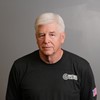
As mentioned in part 1, I have a good friend, Larry Hawkins who wears a T-shirt with the inscription: "You Must Be an Active Participant in Your Own Rescue”.
Part 1 was focused on instructors and their role in marketing. Part 2 focuses on students and their need for training and continued training.
Let’s begin with some facts that emphasize how firearms owners are severely lacking proper training.
Statistics about firearms owners
In 2019, there were 19.48 million Concealed Carry Permit License holders in the United States. That’s 7.6% of American adults. This number does not include “Open Carry” states or adults who can now carry legally in 16 states without a permit through constitutional carry (Crime Prevention Research Center 9/21/20).
Statistics also show that <1% of these license holders have taken training beyond what was required by their state to legally obtain their carry permit. Compound that by the fact that some states do not even require shooting a firearm as part of competency. That translates to more than 19.28 million individuals who have concealed carry permits that have only minimal training at best.
Many certified firearms instructors teach class curriculum from the NRA and USCCA that require students to attend 8+ hours of training including classroom and range time. Although these classes provide a good basic foundation for gun ownership, they don’t prepare individuals for actual carry.
These classes are quite often attended by men and women who have not taken an introductory course to firearms or even a basic firearms training course. In some cases, the students have never even fired a firearm; yet they will most likely pass the class requirements and be entitled to apply for and receive their concealed carry weapons permit and then legally carry.
To be fair, I don’t want to paint all CCW holders who have not taken additional training classes with a broad brush. I personally know many men and women who regularly participate in IDPA (International Defensive Pistol), USPSA (United States Practical Shooting Association) GSSF (Glock Sport Shooting Foundation) and other competitive shooting groups that have exceptional gun skills.
There is also a high number of those concealed carry license holders who do take their right seriously and attend additional training and advanced training. Many attend courses that induce stress inoculation to help prepare themselves for a day they hope and pray never comes. But unfortunately, they are in the minority.
So, I have a question for the majority - the majority that have only acquired their concealed carry license: Are you really ready to be an active participant in your own rescue? And if not, why?
Are you one of those who believe nothing bad will happen to you? That you live in a good neighborhood where there is little crime? Just think if you lived in Seattle or Portland or one of the growing number of cities where mob groups have taken over.
Common misconceptions about firearms
- Simply purchasing a firearm does not prepare you to use it.
- Going to a range and being able to hit a target at 15-21 feet does not prepare you to deal with a potential encounter.
Training analogy about a professional basketball player:
- This player has had years of training before becoming a professional player
- They practice for hours every day- conditioning, practicing drills, shooting free throws, and more
- They can make baskets one after another without even thinking
- Yet, when it is game time, the average statistic for making a shot is around 50%
Why does the professional basketball player make only half their shots? Practice is only practice.
- Practice is not dealing with stress.
- Practice does not have time constraints.
- Practice certainly does not have an opponent who is determined to make you fail.
I believe this same philosophy applies to private citizens. You cannot deal with what you have not prepared for.
There is another saying that applies to this situation, “You Don’t Know What You Don’t Know”. You only know what you THINK you know. In a stressful situation people will revert to their lowest level of training.
Factors that will influence you during a confrontation:
- Fear (fight / flight / freeze)
- Response (drawing from concealment, weapons manipulation)
- Thinking (is this justifiable)
- Assessing the situation (knowing the target and what is beyond)
- Acting (mental preparedness)
Going to a range and developing good marksmanship is great, but it in no way prepares an individual for concealed carry and being prepared for the unknown.
Listen to what Benghazi hero and ShootingClasses partner Dave (Boon) Benton has to say about the need for training and the three levels of training required-Marksmanship Validation / Weapons Manipulation, Dynamic Situations and Force on Force-in the video below.
Invest in yourself, get training and then get more training. Take an active role in your own “Rescue”; the rewards are there.
Find firearms training in your area.
